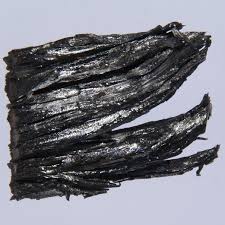Holmiumtrifluorid Chemische Eigenschaften,Einsatz,Produktion Methoden
R-S?tze Betriebsanweisung:
R23/24/25:Giftig beim Einatmen, Verschlucken und Berührung mit der Haut.
R32:Entwickelt bei Berührung mit S?ure sehr giftige Gase.
S-S?tze Betriebsanweisung:
S26:Bei Berührung mit den Augen sofort gründlich mit Wasser abspülen und Arzt konsultieren.
S36/37/39:Bei der Arbeit geeignete Schutzkleidung,Schutzhandschuhe und Schutzbrille/Gesichtsschutz tragen.
S45:Bei Unfall oder Unwohlsein sofort Arzt zuziehen (wenn m?glich, dieses Etikett vorzeigen).
Chemische Eigenschaften
Bright-yellow solid. Insoluble in water.
Verwenden
Dysprosium is most commonly used as in Neodymium-iron-boron high strength permanent magnets. While it has one of the highest magnetic moments of any of the rare earths (10.6uB), this has not resulted in an ability to perform on its own as a practical alternative to Neodymium compositions.
It is however now an essential additive in NdFeB production. It is also used in special ceramic compositions based on BaTiO formulations.
Dysprosium is used, in conjunction with Vanadium and other elements, in making laser materials and commercial lighting. Nanofibers of Dysprosium compounds have high strength and large surface area. Therefore, they can be used to reinforce other materials and as a catalyst.
Recent research has examined the use of Dysprosium in Dysprosium-iron-garnet (DyFeG) and silicon implanted with Dysprosium and Holmium to form donor centers.
Dysprosium Metal is an important additive for NdFeB permanent magnets to raise the Curie temperature and improve temperature coefficiency. Another most promising use of high purity Dysprosium Metal is in the magnetostrictive alloy TEFENOL-D. There are also other applications for some special master alloys. It is highly susceptible to magnetization, they are employed in various data-storage applications, such as in hard disks.

Holmiumtrifluorid Upstream-Materialien And Downstream Produkte
Upstream-Materialien
Downstream Produkte

